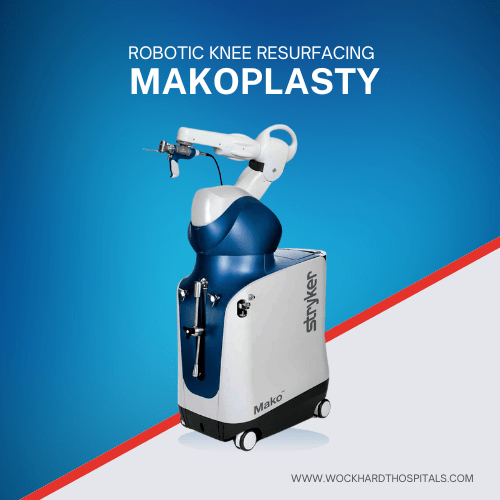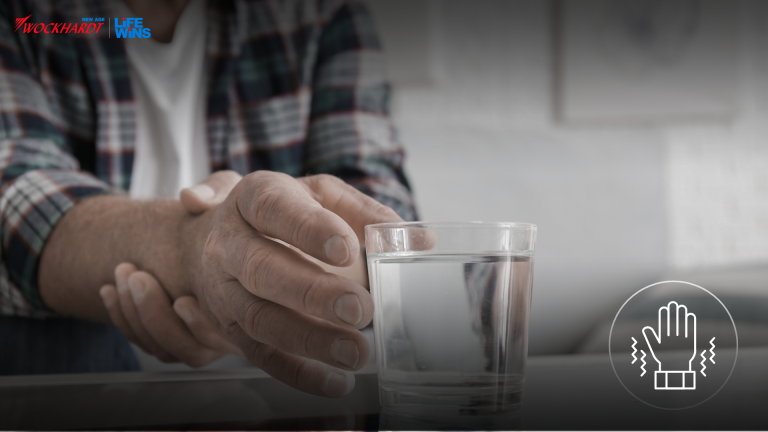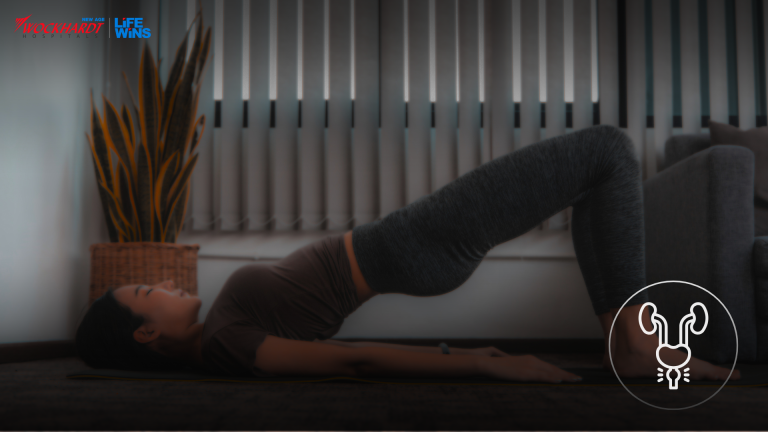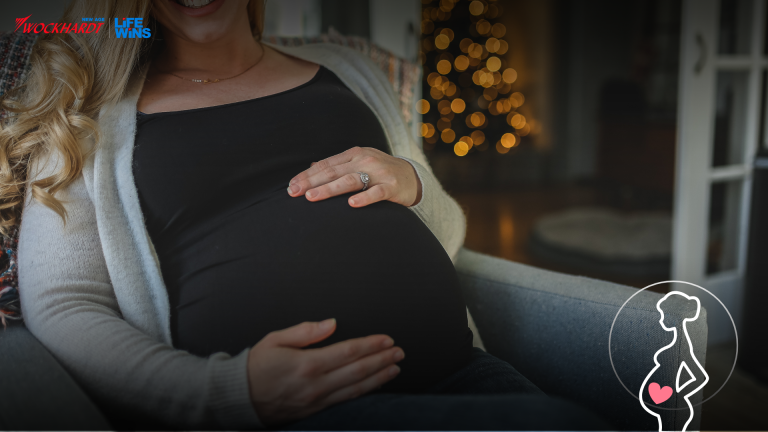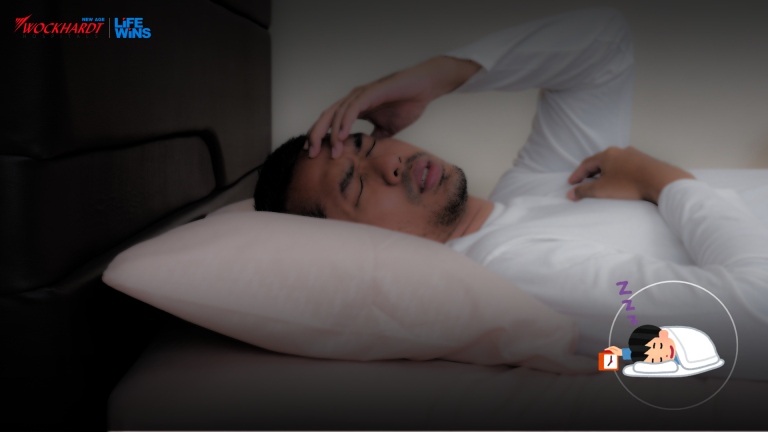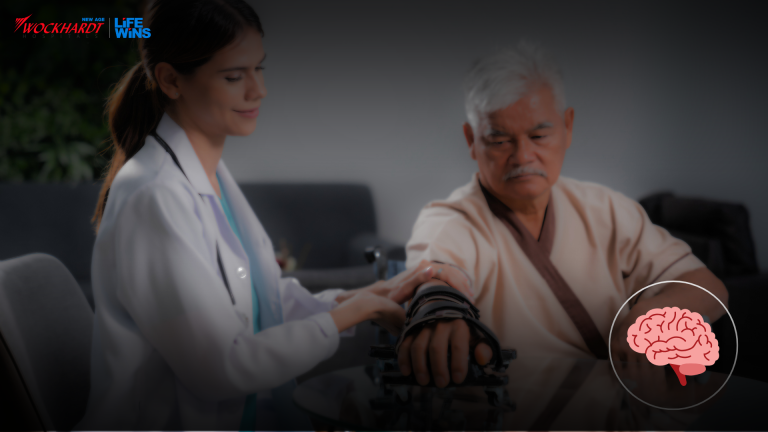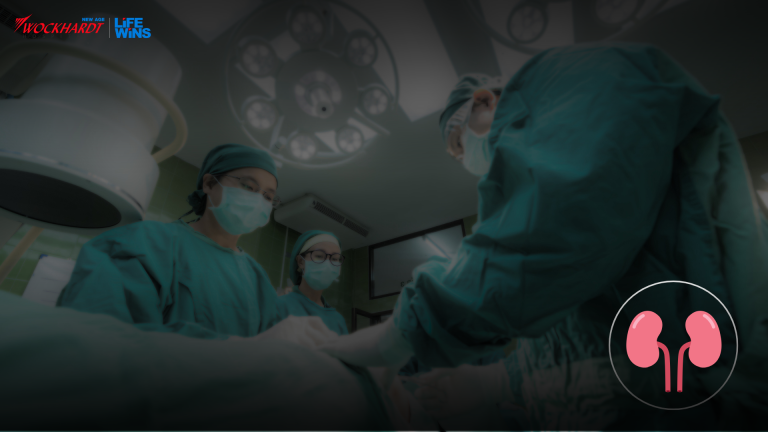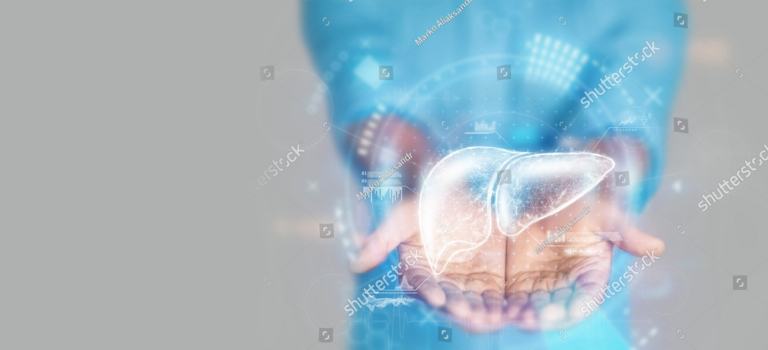Understanding Plasma Therapy
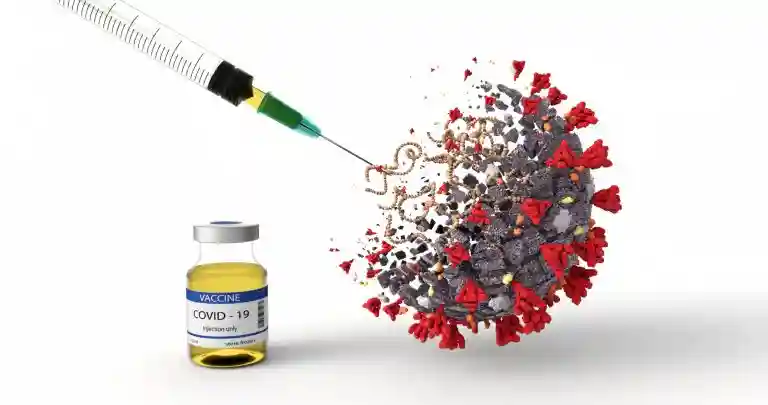
In Delhi Chief Minister Arvind Kejriwal inaugurated India’s first plasma bank at the Institute of Liver and Biliary Sciences (ILBS) to ease access to plasma that is being used as a trial to treat Covid-19 patients. The rising demand for plasma among the patients pushed the government to set up a one-stop centre for the donors. Plasma was not easily available and the patient’s attendants were running from pillar to post in search of plasma from a recovered patient. What is a Plasma Bank? A plasma bank functions like a blood bank, and has been created specifically for those who are suffering from Covid-19, and have been advised the therapy by doctors. In plasma therapy, the antibody rich plasma from a recovered patient is extracted and administered to a patient. The trials are trying to find out if the antibodies can help patients recover. Criteria for Blood Plasma? Those who had the disease, but have recovered at least 14 days before the donation can be considered – although doctors prefer a time of three weeks between recovery and donation. People between the ages of 18 and 60, and weighing not less than 50 kg are eligible. Women who have given birth are not eligible, as the antibodies they produce during pregnancy (after being exposed to the blood of the foetus) can interfere with lung function. People with comorbidity such as diabetes, hypertension, and cancer are also excluded. What is the Procedure? Once you reach the centre, a doctor will take a detailed medical history and conduct a physical examination (Height, Weight, Blood Pressure, Temperature, adequate veins for phlebotomy). What Test are Carried out Before Donating Plasma? Laboratory tests are carried out to assess various conditions – serum protein and CBC, TTI testing for hepatitis B virus, hepatitis C virus, HIV, malaria, and syphilis – and for blood grouping and antibody screening. Serum Covid-19 specific IgG antibody concentration higher than 80 is preferred. Can a Patient’s Family Directly Contact the Plasma Bank? No. Each hospital should contact the plasma bank along with the details of the patient who is in need of plasma therapy. How Many People Would Be Benefitted by One Person’s Donation? Each plasma donation would be used to treat 2 patients. The bank collects 500 ml of plasma, depending on weight. How Does Plasma Donation Differ From Blood Donation? In plasma donation, as opposed to blood donation, only plasma is extracted and the other components of blood are returned to the body. “plasma and return all red blood cells and other components of blood. All plasma proteins lost by you due to donation will be formed again in 24-72 hours. How Often Can a Recovered Patient Donate Plasma? 500 ml of plasma can be donated every two weeks, while blood can be donated once in three months. This is safer with very little stress on the body. Plasma can be stored for a year, as frozen plasma will still have antibodies.
Natural Remedies for Skin in Winter

With Wockhardt Hospitals’ expert-recommended home treatments, you can have your skin ready for the harsh winter season. Here, you will learn the causes of winter dry skin and the top ten ways to shield your skin in the winter months to maintain optimum skin health and a glowing, rich complexion. Skin lose its glow and moisture in the winters so it becomes extremely important to maintain your skin especially in this dry season. Homemade remedies are the best because they are effective and do not have any kind of side effect. Homemade remedies works wonders on the skin. Opt the homemade remedies to get radiant and glowing skin. 10 Best Home Remedies for Skin in Winter 1) Banana face pack If your face is too dry then you can apply banana face pack. All you need to do is to mash the bananas add milk, honey, lime juice to it and apply this on face. 2) Almond Oil Almond oil is extremely beneficial for the skin as it provides the appropriate moisture and maintain the natural glow. You can massage your face with almond oil and leave it overnight for the best results. Use it on a daily basis to get more radiant and glowing skin. 3) Honey and egg white pack Honey and egg are some of the best ingredients that people are using since ages. They provide the exact moisture to the skin and the end result is soft and glowing skin. 4) Oatmeal and milk Make a paste of some oatmeal and milk. Apply it on the face, gently rub and let it dry. Then after few minutes rinse it off. This will remove the dead skin from your face and will make it more glowing and beautiful. 5) Curd Curd is surprising enough to be in this list. But actually it can make your skin extraordinarily beautiful and glowing. 6) Cucumber Cucumber is the best remedy to treat any type of skin problem. It is rich in water content, you can either eat it directly or apply it on the face. 7) Coconut Oil: All hail the great savior that is coconut oil, for there’s nothing it can’t do – except maybe be used on oily skin types! But for dry and dull skin, coconut oil acts as an excellent moisturizer. 8) Aloe Vera Aloe vera gel acts as a great moisturizer because of its non-greasy texture and can double as an aftershave too. It also keeps away acne and wrinkles on the skin, helping to keep your skin firm. 9) Milk Raw milk actually works as a great toner for the skin. Loaded with antioxidants and lactic acid, it helps to even out your complexion and remove dark spots on your face. You can also combine raw milk with ingredients like papaya, honey, almond, turmeric or so on to help your skin glow. 10) Drinking Lots and Lots of Water Hydrating your skin from within flushes out toxins from your body, clearing out acne by balancing the oils on your face, and also helping to reduce wrinkles. It is recommended that women drink at least 1.6 litres of water a day and men drink about 2 litres. Causes of Winter Dry Skin Winter dry skin is a common concern due to various environmental factors. Understanding the causes can help in formulating effective preventive measures: Symptoms of Winter Dry Skin Damage done to the skin barrier during the winter can cause dryness, which can result in: Medical Treatment for Winter Dry Skin With the correct products and a few tweaks to your skincare routine, you might be able to maintain radiant, smooth skin throughout the winter. Here are key interventions recommended by healthcare professionals: Lifestyle & Home Remedies If these methods do not relieve your symptoms or if they worsen, speak with an experienced skin doctor (Dermatologist) about developing a personalised skincare plan based on your skin type and skin-related conditions you may have. If you have a significant skin illness, your doctor may recommend a cream or ointment. Corticosteroid creams can be prescribed for short-term use to alleviate inflammation. Seeking medical advice from top dermatologists at Wockhardt Hospitals helps identify and address any underlying health issues contributing to persistent winter dryness. FAQs on Winter Care for Skin Q. How can I get a winter glow naturally? Stay hydrated by drinking plenty of water and incorporating moisturising foods into your diet for a natural winter glow. Adopt a regular skincare routine with gentle cleansers, hydrating masks, and natural oils to nourish and protect your skin against the harsh winter elements. Q. How can I moisturise my skin naturally in the winter? Hydrate from within by drinking water, and consider using shea butter or aloe vera gel to soothe and moisturise your skin during the colder months. Use natural oils like coconut to moisturise, and apply a honey and yoghurt mask for added hydration in winter. Q. Can rose water be used as a moisturiser? Yes, rosewater works well as a moisturiser for skin that is greasy and prone to acne. Because of its inherent anti-inflammatory qualities, it may help lessen acne-related redness and irritation. Q. What can I use instead of moisturiser? Almond, castor, coconut, vitamin E, and olive oils are all-natural and excellent moisturisers. They help your skin with a number of problems, including pigmentation, dark circles, blemishes, and skin allergies, in addition to moisturising it. Q. Should I consult a skin specialist for skin treatment? Yes, consulting a skin specialist at Wockhardt Hospitals is recommended for personalised and effective skin treatment tailored to your specific needs. A dermatologist can accurately diagnose skin issues, prescribe appropriate treatments, and offer professional advice for maintaining healthy skin. Q. Tips for homemade winter skin care homemade? Keep your skin hydrated by using natural moisturisers like olive oil or shea butter. Create DIY masks with ingredients like honey, yoghurt, and avocado for added nourishment. Stay hydrated from within by drinking water and fluids, and protect your skin from harsh weather by using gentle cleansers and
COVID-19: A Myth or The New Way of Life?
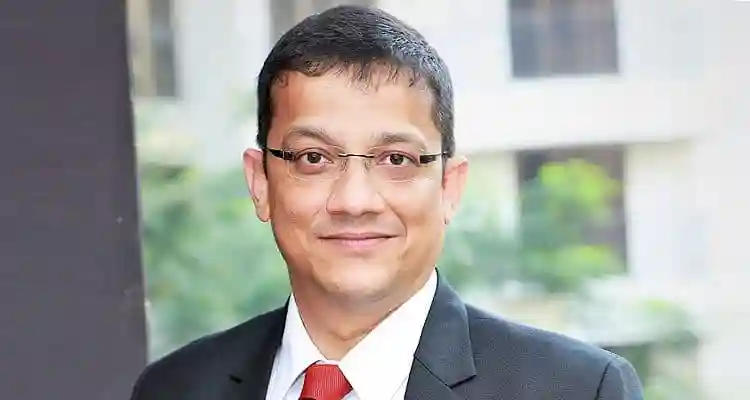
Dr Clive Fernandes, Group Clinical Director, Wockhardt Group Hospitals, Consultant, Joint Commission International Expert at ISQua, RPI Certified Yellow Belt shares insights on how hospitals can successfully deal with challenges that they encounter during the COVID-19 crisis Today, COVID-19 is the most searched for term on google. The daily number of invitations sent out by anyone and everyone on LinkedIn, Zoom and other mass conferencing platforms regarding education and webinars on all aspects related to COVID-19 would seem to indicate that we have mastered all aspects of the disease. But the stark reality on the ground is different. There are many challenges that healthcare organisations are facing due to the ongoing COVID-19 pandemic. Below are a few of the challenges and how we at Wockhardt hospitals are dealing with them Lockdown and Shutting Down of Public Transport Since most staff use public transport to commute to the hospital they were left with no mode of transport. Our HR department responded quickly, liaised with the local municipal authorities and arranged for buses from major routes ensuring that staff were able to reach the hospital. Staff using their personal vehicles had their hospital ID cards as well as an official letter on the company letterhead stating that they were part of essential services. Focus On Infection Prevention and Control at Hospital Entry Points Screening and triage, an effective screening process helps in identifying and mitigating risks. Every person entering the hospital had to undergo the thermal scanning for temperature and were asked six screening questions (which were based on the symptoms of COVID-19). If the answer to any question was yes, they had to see a medical officer before they were cleared to enter the hospital. Everyone had to practice hand hygiene at the entrance gate of the hospital and had to wear a 3-ply mask before they entered the hospital. Segregating COVID / Suspected COVID Patients From Routine Patients Wockhardt established a dedicated COVID-19 unit to prevent cross infections among patients with COVID symptoms /diagnosis and other patients. The dedicated COVID-19 unit had a separate entrance and exit. This unit had its own air handling unit that ensured that the airflow did not mix with the airflow with the other parts of the hospital. We identified dedicated staff for this unit and defined additional safety protocols for all clinical processes like medication ordering and administration, food handling, waste handling and clearance etc. Personal Protective Equipment and Its Related Challenges Personal Protective Equipment, PPE, is essential to prevent the spread of infection from one person to another. PPE requirements were defined and were provided by the hospital daily to all level of associates as per their exposure risk (from the security guard, cash handlers in the billing department, to clinical staff). We had defined and provided an elaborate PPE kit to all associates working in the COVID-19 unit. Donning and Doffing Process The process of sequentially wearing the PPE is known as donning and the process of sequentially removing the PPE is known as doffing. We identified rooms with a separate air handling unit for donning and doffing. Since these processes are very important, all associates were individually trained in both. Greater emphasis was laid on training staff on the doffing process as if not done correctly there would be a risk of infecting fellow associates. Staff were assigned a buddy to help them familiarize themselves with the processes until they became comfortable. In the donning and doffing rooms, we posted posters on the wall that illustrated sequentially the steps to be followed for the processes and included a demonstration video on donning and doffing that was available on an iPad. There was an assigned showering room adjacent to the doffing room and we made showering post doffing mandatory. This step was taken to eliminate any risks of contamination being transferred out of the unit. Addressing Staff Issues This was the most important challenge that most healthcare organizations faced and continue to face and have to deal with on a daily basis. These are divided into two main categories Fear of working in a COVID-19 unit: This was a genuine fear as we encouraged social distancing and highlighted the contagious nature of this virus while at the same time had our staff assess patients, administer medications and do procedures if required. We were able to overcome this challenge to an extent by training staff on how the disease was transmitted and how it could be prevented by properly donning and doffing the provided PPE. The showering protocol that we defined post duty actually helped ease most of the staff’s apprehensions. The initial challenge was designing showering facilities in the vicinity of the doffing rooms but our maintenance department did a wonderful job in overcoming that challenge. Society and neighbourhood issues: The fear created by this pandemic has been such that the very people who came out in their balcony and flashed lights and banged plates to appreciate healthcare professionals acted very differently in reality. Many healthcare professionals were informed by their landlords/societies that they would not be allowed to return home if they went to the hospital. We dealt with this by allowing our staff to stay at the hospital but then this actually decreased the hospital’s available capacity to admit patients. Reinforcing social distancing: Many times once associates moved back to the hostel post duty they tended to relax safety protocols especially the ones dealing with social distancing. We continuously kept educating staff to follow this 24*7. We identified “marshals” who moved from one department to another enforcing the social distancing norms, especially at tea breaks/meal times where we had witnessed maximum violations. We also instructed staff to prepare a daily line list of all associates with whom they came in close contact with and instructed department heads to check the lists periodically. This helped us to reinforce the social distancing protocol and if any staff tested positive for COVID-19 we were able to easily identify, quarantine and observe their contacts for
Chronic Liver Disease Signs And Symptoms: Gastroenterologist Tips To Tackle Them
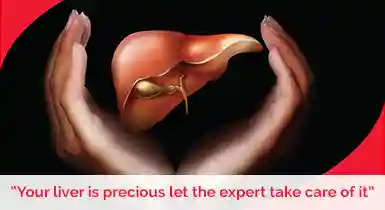
Are you suffering from a liver disease? Then, set all your worries free as we tell you how you can deal with it. Read on to know more about this! The liver is a vital organ located under the rib cage and on the right side of the abdomen. Your liver should be in good shape to perform all the functions that it is meant to. Your liver carries out various tasks associated with metabolism, energy storage and detoxification of waste. Moreover, it produces bile that is necessary to aid digestion, convert it to energy, and store the energy in the form of glycogen until you need it. You will also be surprised to know that it helps filter toxic substances out of your bloodstream. What is Liver Disease? Liver disease can be described as any condition that tends to take a toll on your liver. You may suffer from these conditions owing to different causes. It is no brainer that these lives-threatening conditions can damage your liver by impacting its function. Here are some common conditions shared by Dr Pratik Tibdewal, Gastroenterologist, Wockhardt Hospital, Mira Road that give a tough time to your liver. Hepatitis It can be termed as an inflammation of the liver. You will be shocked to know that this condition can further progress to scarring or cirrhosis of the liver if not treated. Hepatitis viruses, alcohol, certain drugs and autoimmune diseases can raise one’s risk of suffering from hepatitis. Are you aware? There are five main types of hepatitis (A, B, C, D, E). A and E are caused owing to ingestion of contaminated food and water. B, C and D occur due to receipt of contaminated blood or blood products, invasive medical procedures using contaminated equipment, sharing razors or needles and by tattooing too. Non Alcoholic Fatty Liver Disease Non-alcoholic fatty liver disease (NAFLD) is an umbrella term for various liver conditions affecting people who drink little to no alcohol. It can be described as fat deposits in liver cells. Furthermore, some people with NAFLD may also develop nonalcoholic steatohepatitis (NASH), that is an aggressive form of fatty liver disease, causing liver inflammation, (cirrhosis) and liver failure. The Symptoms you Must Watch Out Common symptoms are dark urine, tiredness, nausea, vomiting, abdominal pain, jaundice, pale stool, unintentional weight loss and poor appetite, abdominal distension, bleeding thorough vomiting or anus, altered consciousness. In case you spot these symptoms then consult your doctor without any delay. The Treatment Your doctor will evaluate you thoroughly. The treatment will be suggested based on the underlying condition. The procedure may vary from person to person, depending on the stage and the amount of damage done to the liver. You will be asked to take antiviral medications, antibiotics, steroids, and vitamins and supplements to keep your liver in good shape. Liver cancer may require chemotherapy or radiation therapy. Also, some people may have to undergo surgery to remove the part of the liver. You will also be required to follow healthy lifestyle modifications such as a diet loaded with fresh fruits and vegetables, healthy fats, and whole grains can be helpful. A teaspoon of low salt and high protein diet is advised in advanced liver disease. Also, do not forget to exercise and maintain optimum weight. Do not forget to go for regular follow-ups with your doctor. When all these options failed, that time a liver transplant will be required for you.
Wockhart Hospitals, Mira Road conducts free health check-up for Mumbai Police
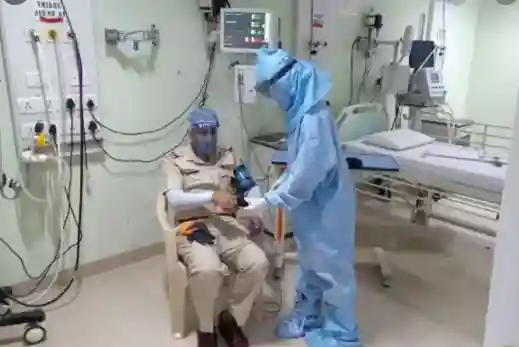
With the country grappling with the spread of coronavirus cases, every effort is underway to try and stem this. The lockdown is one way to try and curb the spread of Covid-19 and police are also working round-the-clock, to ensure that the lockdown rules are being followed by the people. To help the cops in their duty and ensure they stay fit, Wockhardt Hospitals, Mira Road, in association with Nayanagar police station at Mira Road, conducted a free general health check-up in Mira Road drive for these officers. In this one-time activity, around 20 police officers (over the age group of 50+) were screened. They received a check-up from a physician as well as RBS, BP, temperature monitoring and ECG were done. Says Dr Pritam Moon, Internal Medicine Consultant of the hospital, “Due to lockdown, police are on duty and taking continuous care for us and our safety. Our hospital has supported an initiative as a CSR responsibility and more than 15 police personnel came for the screening of BP, ECG, and regular check-ups.Adding a note of appreciation, police inspector Kailas Barve, “It was a great pleasure to have a support of Wockhardt Hospitals in Mira Road to help us with screening check-up. In our daily busy schedule, it’s difficult to intervene check-ups.” Source: https://timesofindia.indiatimes.com/entertainment/events/mumbai/hospital-in-mira-rad-conducts-free-health-check-up-for-mumbai-police/articleshow/75519669.cms
Right Food for Healthy Heart

Eating the Right foods for a healthy heart will only show its benefits if consumed at the right time. An average human being consumes food for 16-17 hours a day. Our intestines need to ‘sleep’. If we continue eating, all that food just piles up,” Dr Ravi Gupta, Cardiologist, Wockhardt Hospital, Mumbai Healthy diet must be eaten in accordance with the Circadian rhythm to enhance its nutritional benefit. The circadian rhythm is our internal body clock that guides us towards the ‘right’ time for eating, sleeping and exercising. There SAY Timing is everything: Simply put, eat the most when the sun is up and stop when it sets. “Only when a heart-friendly diet is integrated within this paradigm, is it able to support cardiovascular well-being,” says Dr Ravi Gupta, Cardiologist, Wockhardt Hospital, South Bombay. How to establish a good circadian rhythm (body clock) for good health: 1)For your circadian diet to bear fruit, one needs to sleep on time. Too much of exposure of electronic devices can upset your sleep stages, digestion and hormone function. Avoid too much of electronic devices stimulation before going to bed. 2) Reduce amount of caffeine intake before bedtime. 3) Reverse the calories by sundown; all kinds of food should be avoided. 4) Proper exercise can have a significant circadian phase-shifting effect and affect the sleep and wake schedule in human improving our bodily function and overall health. Conclusion: Contrary to popular belief, the circadian diet is not limited to heart patients. It’s for everybody. This is a lifestyle diet with a set of rules and recommendations that looks at the heart and its function with the natural rhythms of the sun. A synchronised way of eating has long-term health benefits across all age demographics.
Emergency medical facility saves patient suffering from gall bladder infection
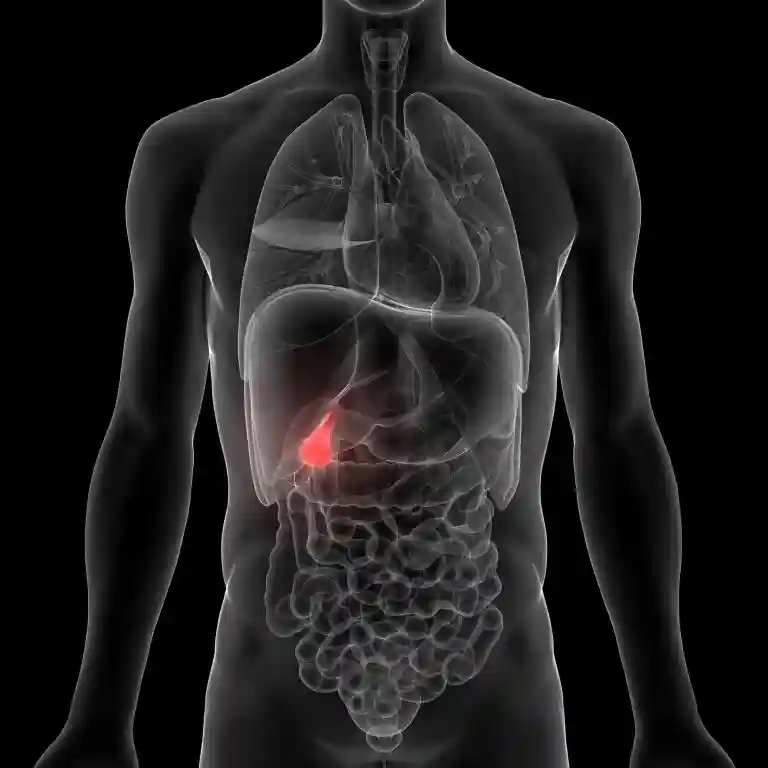
Amidst the lockdown Wockhardt Hospitals is fully geared up to manage and treat conditions of various specialities in an emergency situation.Our dedicated staff is fully trained and under strict safety the hospital is ready to face and provide medical services to its patients. A 52 year old was brought to the Emergency Department of Wockhardt Hospitals in Mira Road with sudden onset severe, excruciating pain in the abdomen and fever. On examination the doctors shifted to the CT scan department immediately,his scan revealed empyema of Gall bladder secondary to cholecystitis, i.e. severe infection in the gallbladder which was full of pus. Dr. Brijesh Dube, Consultant Laparoscopic and Bariatric Surgeon after consultation decided that the only way to save patients was to perform an emergency surgery, Laparoscopic holecystectomy. The Patient was comfortable after the surgery, and discharged after 2 days. Patient and his relatives were very relieved and grateful that they came to Wockhardt Hospitals, Mira road and appreciated the fact that all emergency services were functional and doctors were available despite the nationwide lockdown.
40 Year Old Man Saved From Spinal Cord Cancer
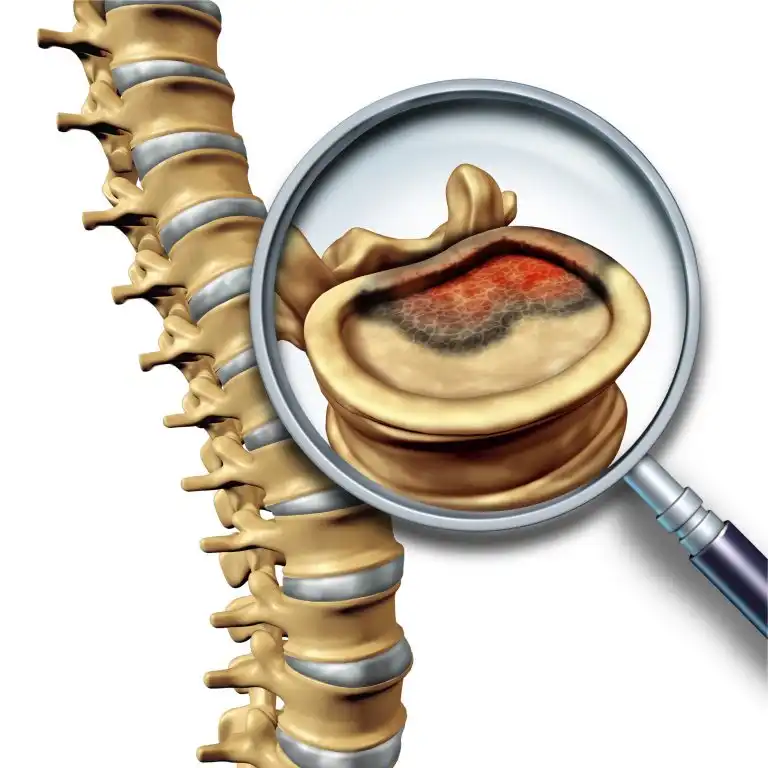
Amid Lockdown, 40 Year Old gentleman, Suffering from Intradural Spinal Cord tumor, Successfully Underwent Life-saving Surgery At Wockhardt Hospitals, Mira Road The tumor size 3.5 X 1.8 X 1.8 cm compressed the nerve roots of his lumbar region in the spine and led to impending Cauda Equina (nerve damage) Syndrome ” One of the main symptoms was backpain. The patient’s job profile involved a lot of desktop sitting, working on laptop due to work from home nature in this current pandemic “ A team headed by Dr Girish L. Bhalerao, Consultant Orthopaedic Joint Replacement(Arthroplasty), Sports Medicine (Arthroscopy) & Spine Surgeon, Wockhardt Hospitals, Mira Road, and Dr Ashwin Borkar, Consultant Neurosurgeon, Wockhardt Hospitals, Mira Road, successfully removed a 40-year-old man’s spinal cord tumor with utmost surgical skills and under a high precision microscope. The patient represented with symptoms such as back pain that was troubling him for many months. His job profile involved a lot of desktop sitting, working on laptop due to work from home nature during lockdown that added misery to his pain. Now, the patient has been recovered completely and can independently perform all activities of daily living within 24 hours with ease Life was smooth until Bhupesh Ankolekar, a 40-year-old resident of Mumbai, Who is IT engineer by profession; encountered back pain, a few months ago. Due to the erratic schedule, Bhupesh treated it as an ordinary pain and neglected it. Slowly, he found it difficult to carry out his daily activities. His pain worsened during the current pandemic when the entire country is under lockdown due to coronavirus. The patient visited Dr. Girish L Bhalerao at Wockhardt Hospitals, Mira Road, on OPD basis in first week of May for, what he assumed as, simple backache. After taking a proper medical history and a thorough physical and clinical examination patient was asked to get an X-ray for his spine. His symptoms were on and off and were clinical signs were not consistent. Hence, he was treated like any normal mechanical backache. To his dismay, after 10 days, Bhupesh’s symptoms showed a similar pattern of waxing and waning and could not find any relief. Such response triggered a high suspicion from Dr. Girish Bhalerao and he asked the patient to go for an MRI wherein it was revealed that there was a large multi-level intradural homogeneous tumor size 3.5 X 1.8 X 1.8 cm within the spinal cord spacing the entire extent with severe compression of the nerve roots in the proximal Lumbar region. Bhupesh, a recent father to a one-month-old child with his wife resting homebound after a caesarean section was taken aback after getting the diagnosis. He was also worried about his elderly parents who in this pandemic are at risk of acquiring fever and viral symptoms because of which he could not get any family members to accompany him during hospitalization. However, considering all options, and after counseling by Dr. Bhalerao, the patient underwent a successful tumor excision surgery at Wockhardt Hospitals, Mira Road. And the tumor was removed with utmost surgical skills and under a high precision microscope. “The tumor was inside the dural coats of the spinal cord and was in close proximity to the nerve roots of Cauda Equina with an impending syndrome of signs and symptoms. The patient was explained about the risks related to nerve root damage due to such nature of the tumor. This long surgery required a specialized operation theatre with advanced logistic facilities like a high precision microscope to increase the success rate of the surgical outcome”, said Dr Girish L. Bhalerao, Super Specialty Consultant Orthopaedic Surgeon, Wockhardt Hospitals, Mira Road. Dr Ashwin Borkar, Consultant Neurosurgeon, Wockhardt Hospitals, Mira Road added, “The excised tumor was encapsulated, pedunculated, and put mechanical pressure on the nerve roots. The tumor was removed entirely in toto with no remnants. It took 4 hours for the entire surgery.” Post-surgery, the patient started recovering with no pain and could resume his activities of daily living within 24 hours. The patient was discharged after 3 days of post OP care and rehabilitation. Within 24 hours, patient recovered completely and can independently perform all activities of daily living.” “My parents and wife were shocked after the diagnosis. Not only me, but the entire family was also terrified when they heard about the spine surgery after concerns mentioned by my friends and relatives. We were afraid of complications especially for risk to sensory-motor function or even to life. We thank the hospital and the doctors and nurses who took care of me not only during my stay at the hospital but during post-op follow-up as well. Dr. Girish Bhalerao’s approach was very comforting and gave us confidence. He is very skilled and talented Surgeon and exceptionally humble to answer all the doubts, however silly they are, with great patience. He makes his patients feel like family and takes care even during post OP follow up with great deliberation. Such doctors are rare to find and I’m indebted to him for my life”, delightedly conveyed Mr. Bhupesh.
Most popular medical equipment for personal use
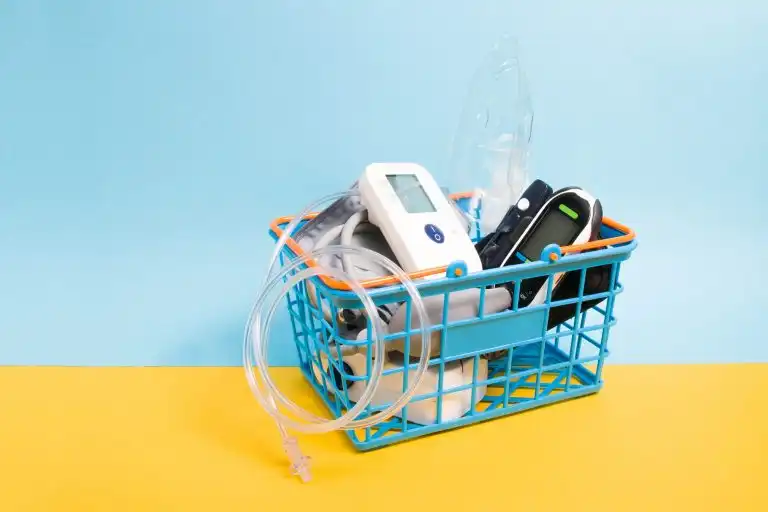
Here below are some of the most popular medical equipment you should consider investing for your personal use. 1. Glucometer: A glucometer is a medical device used at homes to help you monitor sugar levels in the blood. They will also help you keep track of it on a regular basis. This will make the doctor’s job easier to prescribe necessary medication or change the prescription as per the results. For insulin dependents, these glucometers have become a necessity to track and keep record of the levels. While using a glucometer, a small drop of blood is obtained by pricking the skin with a lancet and is placed on to a test strip for the meter to analyze the sugar levels in the blood. 2. BP Monitor: A blood pressure monitor is otherwise known as sphygmomanometer is used to measure the blood pressure. These devices consist of an inflatable cuff and manometer to measure the pressure. From using a stethoscope and cuff, technology has advanced to automated machines which help measure both systolic and diastolic blood pressure with high accuracy and immediately. These instruments are a must have to keep track of blood pressure regularly. 3. Nebulizers: Nebulizers are devices used to administer medication that need to be inhaled into lungs. With dramatic rise in respiratory issues in the recent past, nebulizers can be lifesaving instruments to hold on to at homes especially for people suffering from asthma or any pulmonary diseases (COPD). Nebulizers use oxygen or compressed air to break the solution into aerosol droplets that can be inhaled from the device. 4. Weighing Scales: Weighing Scales are devices which help in reading the body weight and can help while tracking a weight loss progress. These scales can be a crucial tool for ones well-being. With analog and digital weighing scales in the market, it is important to understand that both have large differences and choosing the right one depends on ones needs. Many weighing scales these days come with features which can help find body fat percentage and BMI which are extremely important for understanding of what the current condition of your body is at. 5. Pulse Oximeter: is a small, lightweight device used to monitor the amount of oxygen carried in the body. This noninvasive tool attaches painlessly to your fingertip, sending two wavelengths of light through the finger to measure your pulse rate and how much oxygen is in your system.digital) 6.Thermometer: To monitor your fever and body temperature.(mercury or digital) 7.Water heat bags:for pain relief methods 8.Ice packs: for pain relief,muscle injuries and soothing for insect bites Like your health, these medical equipment’s require some care too. If you already own any, make sure to get them serviced regularly to prevent any possible disruption.
After defeating Covid-19, Mumbai’s Wockhardt Hospitals medicos donate blood for plasma therapy
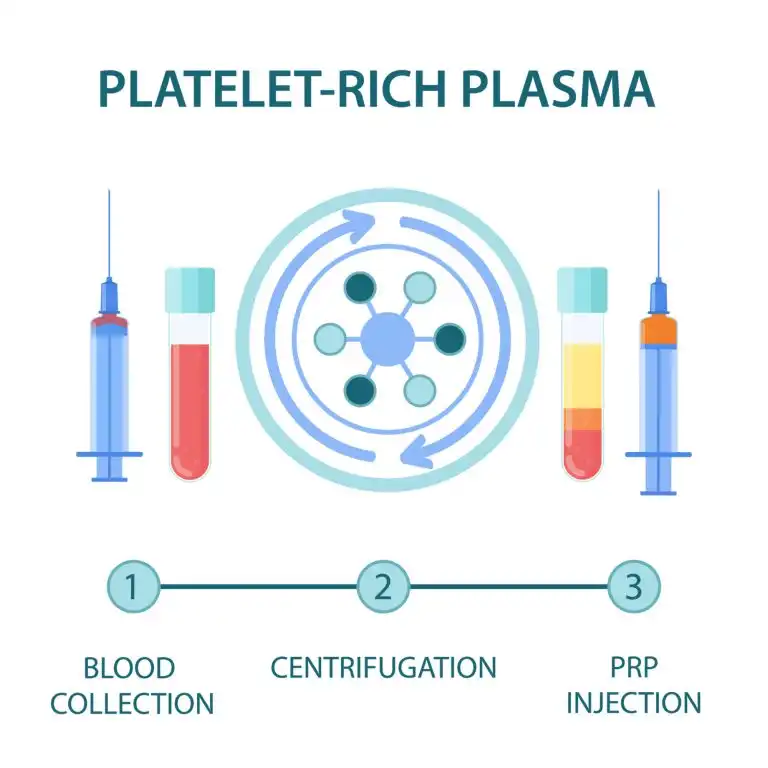
Convalescent plasma therapy involves transfusion of plasma from the blood of recovered patients into those who are moderately or critically-ill. The plasma of the recovered patient contains antibodies that fight the infection. Wockhardt Hospitals, which was declared a containment zone in April after 82 members of its medical staff contracted Covid-19, has received approval from the Central government to conduct a controlled trial of convalescent plasma therapy. In April, Wockhardt Hospitals was declared a containment zone after 82 members of its medical staff contracted Covid-19. More than 50 nurses were accidentally exposed to an asymptomatic Covid-positive patient. The hospital’s non-emergency services were closed till end-April. Earlier this month, the Drug Controller General of India (DCGI) approved the hospital’s request for the trial of convalescent plasma therapy on 20 patients of Covid-19. Convalescent plasma therapy involves transfusion of plasma from the blood of recovered patients into those who are moderately or critically-ill. The plasma of the recovered patient contains antibodies that fight the infection. At present, 123 patients of Covid-19 are undergoing treatment at Wockhardt Hospitals. Of these, 30 are in the intensive care unit (ICU). “Convalescent plasma therapy has been previously used in treating various infectious diseases such as Ebola virus outbreaks based on which we decided to initiate the trial,” said Dr Behram Pardiwala, principal investigator of the plasma trial at the hospital. “We haven’t selected a patient for the trial yet, but we will start the process soon.” Wockhardt Hospitals has tied up with a blood bank where donors can donate their plasma. “We collect around 500ml plasma per donor and the dosing will be given by our clinicians asper our approved protocol. Moreover, a person can donate plasma once a month,” said Dr Parag Rindani of Wockhardt Hospitals. So far, two doctors of the 82 recovered medical staffers from the hospital have donated their blood for plasma therapy. HT spoke to nurse Clera Menezes, 43, who was diagnosed with Covid-19 through cross transmission at the hospital on April 16. She resumed work on May 28 and on June 16, donated her blood. Menezes, who was asymptomatic, isolated herself at the hospital for almost 10 days and then returned to her home in Mira Road, where she again isolated herself. Menezes has two children, aged five and 12. “Every time I opened the door to keep my dishes outside, my children would come running to see me. My husband had placed the washing machine on the passage to my room as a boundary. It was so challenging to stop myself from hugging them,” she said. When she heard about the hospital conducting the plasma trial, she agreed to donate her blood. “I know the feeling of staying alone in an isolation ward. I decided to donate my blood for patients so that they can go home early to their families. I request other recovered patients come forward and donate their blood,” she said.






